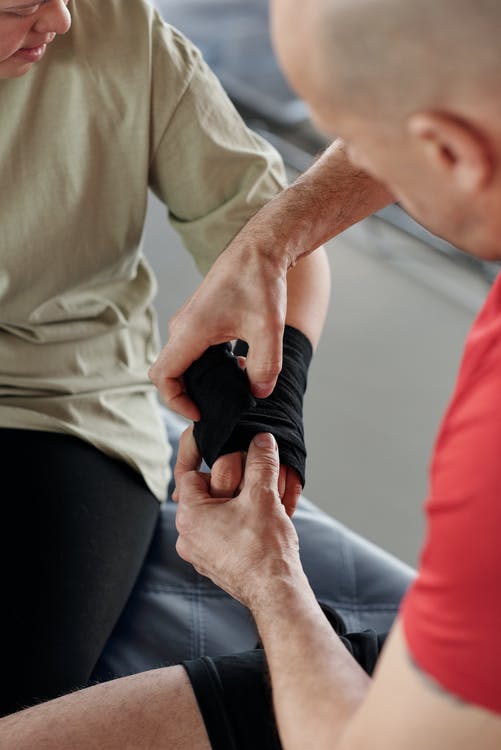It’s a question that many of us have asked at one time or another upon sustaining an injury – do I apply heat or ice to it? The answer will vary depending on who you talk to and what type of injury it is as both have advantages, but for different reasons. Following is a brief rundown of what both are useful for:
Ice
- Reduces circulation: in doing so it also helps stem any bleeding as well as reducing any swelling.
- Reduces proprioception: your ligaments are slower and therefore so are your reflexes and balance reactions.
- Reduces conduction of the nerves: as a result, you will experience a decrease in pain perception.
- Reduces muscle spasms: in slowing down the nerve conduction, you’re slowing down your reflexes and because muscles spasms are a reflexive protective mechanism, there’s no need for them.
- Reduces muscle elasticity: ice thickens the interstitial fluid so that fibres are unable to slide against each other so easily and hence why you lose some elasticity.
- Reduces metabolism: ice acts as a natural anti-inflammatory and reduces metabolism.
Heat
- Increases muscle elasticity: improves flexibility and elasticity by warming the interstitial fluid.
- Increases metabolism: as a result it may increase inflammation.
- Increases blood circulation: because of this, both bleeding and swelling may increase.
- Synovial fluid thickness: as this fluid warms it becomes thinner and enables the joints to move more smoothly.
- Sedative effect: heat will temporarily ease the pain and help the muscle relax.
As you can see from the above, ice is usually the best option for a new injury. Heat is really only used in a few physiotherapy cases:
- To break down scar tissue.
- To help improve the flexibility of the muscle before a stretching session or massage.
- Before certain exercises for inflammatory joint disease or stiff joint patients.
So, in most cases, ice is best. However, one thing to bear in mind is do not use ice before you exercise as it affects the nerve conduction which will make the muscles stiffer, increasing the chance of injury. dont forget a good set of critches or a walking stick while recovering.
Techniques for applying heat and ice
- Hot Packs: One of the best hot packs you can get is the Magic Bag or any other microwavable bag. They give out moist heat which penetrates deeper than dry heat. If you have one that needs filling with warm water, simply wrap a towel around it to get the same moist heat effect. Leave it on the injured area for around 20 minutes.
- Hot Tubs and Warm Paraffin: With a hot tub you often get a relaxed and sedative effect, but as you have to submerge your whole body in it, you can’t get the temperature quite as hot as you can with a heat pack for instance. Some clinics do have hot tubs which only fit the limb so the temperature can be turned up. Warm paraffin is good for small joints such as fingers and toes and a paraffin bath can easily be made at home. Simply mix around 1/3 mineral oil to 2/3 paraffin and just remember to test the temperature before getting in.
- Deep Ice: Really, any frozen goods will do, but peas or corn are the easier to work with because they’re small so they tend to mould to the injured area quite well. Beware of ice packs as they have been known to cause frostbite. Wet ice also works well too. Just wrap a towel around your ice pack and apply to the injured area. The cold will penetrate through while lowering the chance of frostbite. Apply to the injured area for around 15 to 20 minutes and repeat every 2 hours.
- Ice Massage: This is a good way to reduce any pain before exercising but is nowhere near as effective as deep ice treatment. An ice massage simply reduces the circulation in your skin while decreasing the sensitivity of the nerve endings. A good way to do this is to freeze a plastic or foam cup with water in it. When needed, simply peel the bottom off and massage the injured area for between 8-15 minutes.
- Contrast Bath: An extreme but very effective way to reduce swelling. The contrast bath creates a pumping effect in the injured limb by opening and closing the blood vessels, which activates the circulation and helps to eliminate any swelling. To make an effective contrast bath get two containers big enough to submerge the inured area. Fill one with warm water and the other with ice cold water. First, submerge the injured area into the warm water for around 30 seconds. Then, remove it and immediately sink it into the ice cold water, where you leave it for around 1 minute. Then repeat the process for around 15 minutes in total. Please be aware, it will probably hurt quite a lot, but should help the healing process no end.

